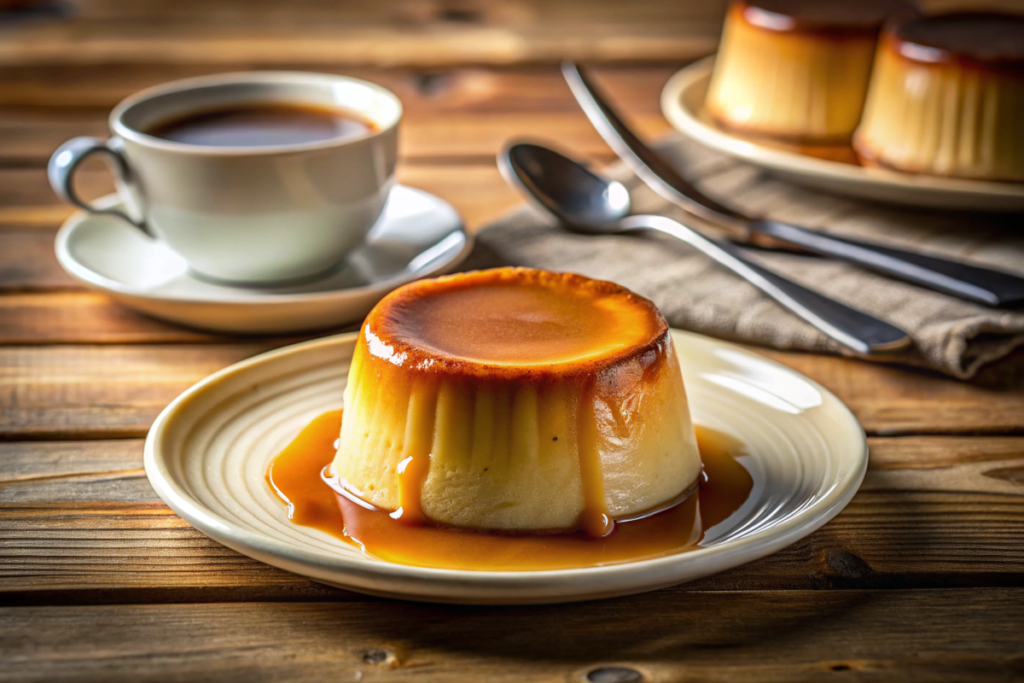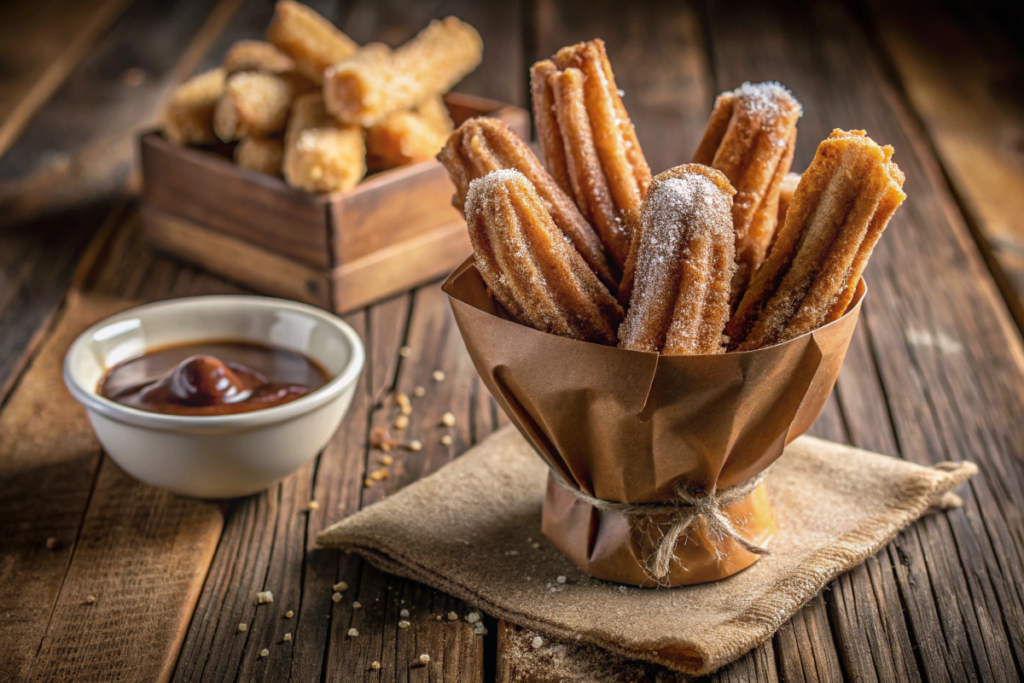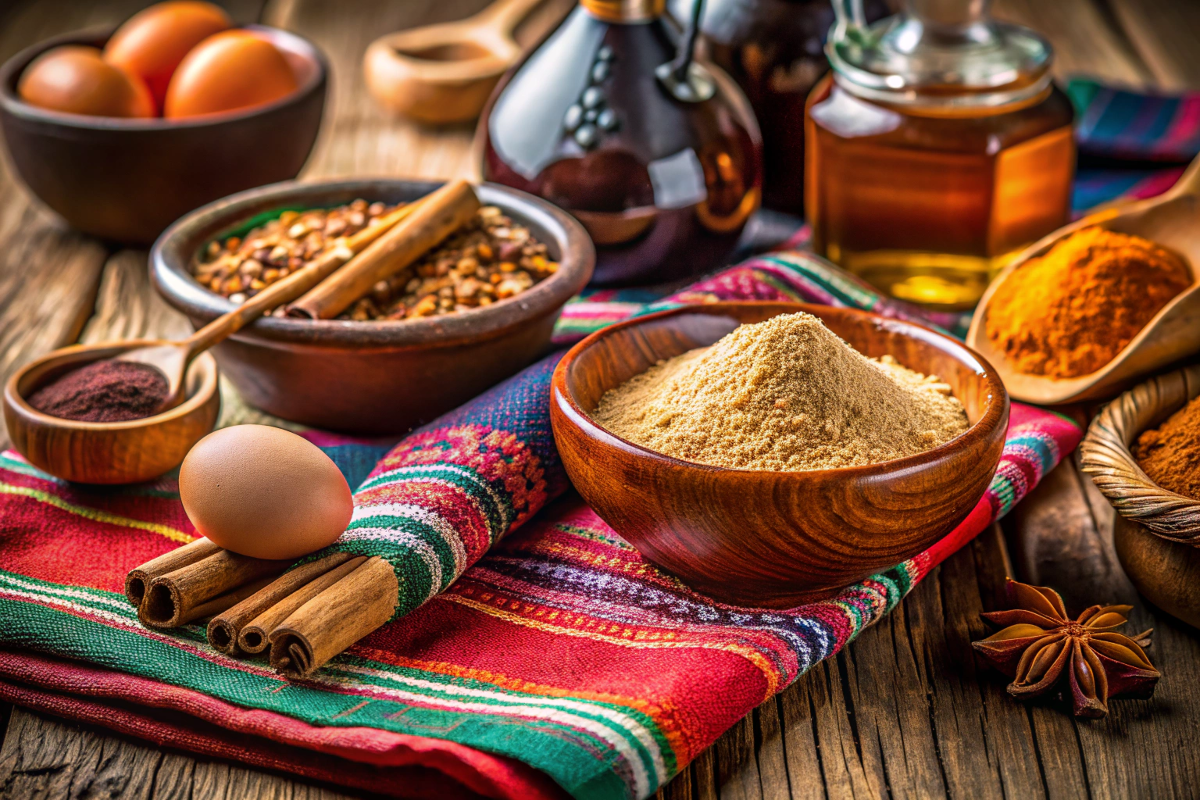Mexican cuisine is renowned for its vibrant flavors, rich history, and diverse ingredients. Among its many culinary delights, desserts hold a special place in Mexican culture. Not only do they satisfy the sweet tooth, but they also reflect the country’s heritage and traditions. In this article, we explore What is the Most Popular Dessert in Mexico? We delve into traditional Mexican desserts, with a special focus on the beloved flan, and uncover the secrets behind these delightful desserts.
Furthermore, we’ll examine classic and creative side dishes, vegetable-based pairings, grain-based options, bread and rolls, salad choices, and delightful desserts. Additionally, you’ll find tips on creating a balanced menu and selecting the right beverages. By the end of this guide, you’ll have a complete menu to impress your guests and enhance your Mexican dessert experience.
Introduction to Mexican Desserts
Desserts in Mexico go beyond merely ending a meal; they play an integral role in celebrations, family gatherings, and everyday life. The importance of desserts in Mexican culture cannot be overstated. They bring people together, celebrate heritage, and showcase the ingenuity of Mexican cuisine. From popular Mexican desserts like churros and tres leches cake to the creamy and smooth flan, each sweet dish tells a story of tradition and taste.
Moreover, Mexico boasts a variety of famous sweets that cater to different palates. Whether you prefer something chocolaty, fruity, or creamy, Mexican desserts have something to offer. These classic treats often feature ingredients like cinnamon, vanilla, and piloncillo, giving them their distinctive flavors. Understanding What is the Most Popular Dessert in Mexico? requires a journey through these delightful sweets.
What Defines a Traditional Mexican Dessert?
Common Ingredients in Mexican Desserts
Traditional Mexican desserts stand out due to their use of unique and flavorful ingredients. Common ingredients include:
- Cinnamon: Adds warmth and depth to many desserts.
- Vanilla: Provides a sweet and aromatic base.
- Piloncillo: A type of unrefined cane sugar that imparts a rich, caramel-like flavor.
- Chocolate: Used in various forms, from mole to hot chocolate.
- Fruits: Such as mango, pineapple, and guava, often used in desserts like paletas and fruit tarts.
These ingredients combine in creative ways to produce desserts that are both delicious and culturally significant.
Historical Influences on Mexican Desserts
The history of Mexican desserts weaves together indigenous, European, and American influences. Indigenous peoples introduced native ingredients like vanilla, chocolate, and agave. Subsequently, the Spanish brought new techniques and ingredients, such as dairy products and refined sugar. In the modern era, American influences introduced new flavors and dessert styles, blending seamlessly with traditional recipes.
This cultural fusion gave rise to top desserts in Mexico that are both unique and universally appealing. Notably, the blend of indigenous and European techniques is evident in the creation of the Mexican flan, which we explore further.
The Most Popular Dessert in Mexico: Flan
Origins of Flan in Mexican Cuisine
Flan stands out as the most popular dessert in Mexico. Its origins trace back to Spain, where the dish was introduced during the colonial period. Over time, Mexican cooks adapted the recipe by incorporating local ingredients and flavors, resulting in the beloved Mexican flan we know today.
Why Flan is Beloved Across the Country
Flan’s widespread popularity stems from its creamy texture, rich flavor, and versatility. This dessert appeals to all ages and suits any occasion, from everyday meals to special celebrations. The smooth caramel topping combined with the delicate custard base makes flan a favorite in Mexico.
Additionally, flan adapts effortlessly to various flavors. Chefs infuse it with ingredients like coconut, coffee, or even cheese, catering to diverse tastes. This adaptability ensures that flan remains the top Mexican dessert for many.
How to Make Flan
Ingredients Used in a Traditional Flan Recipe
Creating the perfect flan requires a few simple yet essential ingredients:
- Eggs: Provide the custard base.
- Sweetened Condensed Milk: Adds sweetness and creaminess.
- Whole Milk: Creates a smooth texture.
- Vanilla Extract: Infuses flavor.
- Sugar: Used to make the caramel sauce.
Step-by-Step Overview of the Preparation Process
Making flan is straightforward and results in a delicious dessert:
- Prepare the Caramel:
- In a saucepan, melt sugar over medium heat until it turns golden brown.
- Quickly pour the caramel into a flan mold, swirling it to coat the bottom evenly. Set aside to cool.
- Mix the Custard:
- In a large bowl, whisk the eggs until smooth.
- Add the sweetened condensed milk, whole milk, and vanilla extract. Mix until well combined.
- Combine and Bake:
- Pour the custard mixture over the caramel in the flan mold.
- Place the mold in a larger baking dish filled with hot water (water bath).
- Bake at 350°F (175°C) for about 50-60 minutes, or until set.
- Cool and Serve:
- Allow the flan to cool completely before refrigerating.
- To serve, invert the mold onto a plate, letting the caramel sauce drizzle over the custard.
This simple recipe highlights why flan is a classic Mexican dessert loved by many.

Regional Variations of Flan in Mexico
Flan Napolitano (With Cream Cheese)
One beloved variation is flan napolitano, which includes cream cheese. This addition gives the flan a richer texture and a slightly tangy flavor, making it even more decadent.
Coffee-Flavored and Caramel Flans
Another popular variation incorporates espresso or strong coffee into the custard mixture, creating a coffee-flavored flan. This version pairs perfectly with a cup of Mexican coffee, offering a delightful balance of sweetness and bitterness. Additionally, caramel flan remains a staple, with its deep, rich caramel sauce complementing the smooth custard.
These variations ensure that flan continues to be a most loved Mexican dessert across different regions.
How Flan is Served and Enjoyed
Traditional Serving Style
Flan is traditionally served chilled, allowing the flavors to meld and the texture to set perfectly. The caramel sauce on top adds a sweet, glossy finish that enhances the overall experience.
Pairing Flan with Beverages
Flan pairs wonderfully with a variety of beverages. A classic pairing is with Mexican coffee, whose robust flavor cuts through the sweetness of the flan. Alternatively, a warm cup of hot chocolate complements the creamy texture, creating a comforting dessert duo. These pairings elevate flan from a simple dessert to a gourmet experience, solidifying its status as the top dessert in Mexico.
Other Popular Desserts in Mexico
While flan reigns supreme, Mexico offers a plethora of other popular sweet dishes that are equally delightful:
Churros
Churros are deep-fried dough sticks dusted with cinnamon and sugar. They are crispy on the outside and soft on the inside, often served with chocolate dipping sauce. Churros are a favorite street dessert enjoyed by people of all ages.
Tres Leches Cake
Tres leches cake is a sponge cake soaked in three types of milk: evaporated milk, condensed milk, and heavy cream. This moist and rich cake is a staple at celebrations and gatherings, loved for its sweet and creamy flavor.
Arroz con Leche
Arroz con leche is Mexican-style rice pudding made with rice, milk, sugar, and cinnamon. It’s a comforting dessert that’s simple yet satisfying, often enjoyed warm or cold.
Buñuelos
Buñuelos are crispy, sweet fritters that are either fried or baked. They are typically dusted with sugar or drizzled with syrup and are especially popular during festive seasons.
These classic Mexican desserts showcase the diversity and richness of Mexican sweet cuisine, making it easy to see why Mexico is a paradise for dessert lovers.

Street-Style Mexican Desserts
Overview of Street Vendors Selling Desserts
Street vendors play a crucial role in the popularity of Mexican desserts. They offer fresh, affordable, and delicious sweets that are easily accessible to everyone. These vendors often specialize in a few key desserts, ensuring high quality and consistency.
Popular Street Desserts
- Paletas: These fruit popsicles are made from fresh fruit and natural ingredients, available in a variety of flavors like mango and strawberry.
- Churros: As mentioned earlier, churros are a street favorite, often enjoyed on the go or as a quick sweet treat.
- Elotes Dulces: Sweet corn on the cob, often coated with sugar, cinnamon, and sometimes chocolate.
These sweet treats embody the vibrant street culture of Mexico and offer a taste of authentic Mexican desserts.
Traditional Holiday Desserts
Desserts Commonly Enjoyed During Celebrations
Mexican holidays are incomplete without their traditional desserts. These sweets hold cultural significance and are often passed down through generations.
Examples of Holiday Desserts
- Rosca de Reyes (King’s Bread): This sweet bread is shaped in a circle to symbolize a king’s crown and is traditionally eaten during Epiphany celebrations.
- Pan de Muerto (Bread of the Dead): A sweet bread adorned with bone-shaped decorations, prepared for the Day of the Dead festivities.
These classic Mexican desserts are integral to holiday celebrations, bringing families together to honor traditions and enjoy delicious sweets.
How Mexican Desserts Have Influenced Global Cuisine
Mexican Desserts in International Restaurants
Mexican desserts have made their way into international restaurants, showcasing their universal appeal. Flan, churros, and tres leches cake now feature in many parts of the world, often adapted to suit local tastes.
Global Adaptations of Classic Mexican Sweets
Global chefs embrace Mexican dessert recipes, incorporating local ingredients and techniques.These adaptations highlight the versatility and enduring popularity of traditional Mexican desserts, making them beloved choices worldwide.
Healthier Alternatives to Traditional Desserts
Sugar-Free and Gluten-Free Versions
In response to increasing health consciousness, many traditional Mexican desserts now come in healthier versions. Sugar-free flan, made with natural sweeteners, and gluten-free churros, using alternative flours, cater to those with dietary restrictions.
Low-Calorie Takes on Popular Mexican Sweets
Chefs also create low-calorie versions of beloved desserts. For instance, using low-fat dairy products in flan or reducing the sugar content in tres leches cake makes these popular sweet dishes more accessible to health-conscious individuals.
These healthier alternatives ensure that everyone can enjoy famous Mexican sweets without compromising their dietary preferences.
How to Make Flan at Home
Recipe Breakdown with Tips for Beginners
Making flan at home is simpler than you might think. Here’s a straightforward recipe to guide you:
Ingredients:
- 1 cup sugar
- 4 large eggs
- 1 (14 oz) can sweetened condensed milk
- 1 (12 oz) can evaporated milk
- 1 tablespoon vanilla extract
Directions:
- Prepare the Caramel:
- In a saucepan over medium heat, melt the sugar until it turns golden brown.
- Quickly pour the caramel into a flan mold, tilting to coat the bottom evenly. Set aside to cool.
- Mix the Custard:
- In a large bowl, whisk the eggs until smooth.
- Add the sweetened condensed milk, evaporated milk, and vanilla extract. Mix until well combined.
- Combine and Bake:
- Pour the custard mixture over the caramel in the flan mold.
- Place the mold in a larger baking dish filled with hot water (water bath).
- Bake at 350°F (175°C) for 50-60 minutes, or until set.
- Cool and Serve:
- Remove the flan from the oven and let it cool to room temperature.
- Refrigerate for at least 4 hours or overnight.
- To serve, run a knife around the edges, place a plate on top of the mold, and invert it to release the flan.
Common Mistakes to Avoid When Making Flan
- Overcooking: Flan should be set but still slightly jiggly in the center. Overcooking can result in a rubbery texture.
- Caramel Handling: Be cautious when making caramel, as it can burn quickly. Stir constantly and remove from heat as soon as it reaches the desired color.
- Water Bath: Ensure that the water bath is hot but not boiling, as excessive heat can cause the flan to crack.
By following these tips, you can create a perfect traditional flan dessert at home.
What Makes Flan the Most Popular Dessert in Mexico?
Personal Stories and Cultural Significance
Flan holds a special place in the hearts of many Mexicans. It’s often associated with family gatherings, celebrations, and cherished memories. Personal stories of enjoying flan with loved ones contribute to its enduring popularity.
Statistics and Survey Results on Flan’s Popularity
According to recent surveys, flan consistently ranks at the top of favorite desserts in Mexico. Its widespread availability, ease of preparation, and beloved taste make it the go-to choice for many.
These factors combined ensure that flan remains the most popular dessert in Mexico, cherished by generations.
FAQs About Most Popular Dessert in Mexico
What is the most common dessert in Mexican restaurants?
Flan typically tops the list as the most common dessert found in Mexican restaurants.
Its popularity and widespread appeal make it a staple on dessert menus across the country.
Is flan served warm or cold?
Flan is traditionally served cold. Chilling the dessert allows the flavors to meld and the texture to set perfectly, enhancing its creamy and smooth consistency.
What is the difference between Mexican and Spanish flan?
While both Mexican and Spanish flan share similar basic ingredients, Mexican flan often incorporates local flavors like coconut or coffee.
Additionally, the caramel sauce in Mexican flan tends to be richer and more pronounced.
Conclusion and Final Thoughts
In exploring What is the Most Popular Dessert in Mexico?, it becomes clear that flan stands out as the beloved choice. Its rich history, creamy texture, and versatile flavors make it a classic Mexican dessert that continues to captivate dessert lovers both in Mexico and around the world.
Whether enjoyed at a family gathering, a festive celebration, or as a simple treat at home, flan embodies the essence of Mexican sweet cuisine. We encourage you to try making flan at home or savor it at a local Mexican restaurant to experience why it is celebrated as the best Mexican dessert.
Embrace the sweetness of Mexican culture and indulge in one of its most treasured desserts. Your taste buds will thank you!

